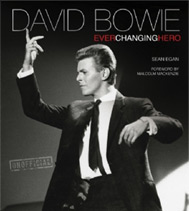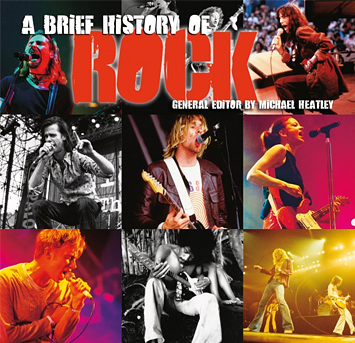The history of post-war jazz tracked the musical development of Miles Dewey Davis III so closely that it is tempting to see the trumpeter as the orchestrator of each of the most significant stylistic shifts of the era. With the notable exception of free jazz, Miles seemed to trigger a new seismic shift in the music with each passing decade. ...
(Guitar, harmonica, banjo, vocals, 1896–1972) Gary D. Davis was born in Laurens, South Carolina and was completely blind by the age of 30. He taught himself harmonica, banjo and guitar and played in string bands throughout the teens, going on to work the Carolinas as a street singer in the 1920s. Ordained as a ...
(Vocals, 1899–2000) Born in rural Louisiana, Davis first made his name singing on radio station KWKH in Shreveport. From 1928 onwards, he was a popular recording artist, initially with sentimental and cowboy songs, then with raunchy blue yodels in the manner of Jimmie Rodgers. These included ‘She’s A Hum Dum Dinger From Dingersville’ and ‘Bear Cat ...
(Vocals, 1931–2004) Davis (real name Mary Frances Penick) began her career in a duo called The Davis Sisters, along with her friend Betty Jack Davis. They had a No. 1 hit for RCA with ‘I Forgot More Than You’ll Ever Know’ in 1953 before Betty Jack was killed in a car crash later that year. On her own, ...
(Vocals, songwriter, actor, b. 1942) Also a television host, composer and one-time representative for Vee-Jay records, Texas-born Davis is responsible for several bestselling songs, including ‘In The Ghetto’ and ‘Don’t Cry Daddy’, both 1969 US Top 10 hits for Elvis Presley. Davis himself topped the US pop chart in 1972 with the million-selling ‘Baby Don’t ...
1927–2013 English conductor Davis came to public notice as the conductor of early performances by the Chelsea Opera Group. He made his debut at Sadler’s Wells Opera in 1958, and was music director 1961–65. He was principal conductor of the BBC Symphony Orchestra 1967–71, music director of the Royal Opera 1971–86 and of the Bavarian State Radio Orchestra 1983–92 ...
A musical ensemble is a group of two or more musicians who have come together to play music. In theory, an ensemble could contain any number of instruments in any combination, but in practice, certain combinations just don’t work very well, either for musical reasons or because of the sheer practicality of getting particular instruments and players ...
The flugelhorn developed from the bugle, a signalling horn used in the Middle Ages and made out of bull or ox horn. This developed into a large, semicircular hunting horn made of brass or silver that was used by the military during the Seven Years’ War (1756–63). History Wrapping the horn around itself once, so the bell pointed ...
The trumpet is one of the most ancient instruments still played today. Clear depictions of trumpets survive in Egyptian paintings and two trumpets – one of silver, the other of gold and brass – found in the tomb of Tutankhamun date back to at least 1350 BC. There are many examples of Roman and Greek trumpets which, like the ...
Few would deny that the blues has played a more important role in the history of popular culture than any other musical genre. As well as being a complete art form in itself, it is a direct ancestor to the different types of current popular music we know and love today. Without the blues there would have been no Beatles ...
Like a great river that runs endlessly, forming numerous tributary streams as it flows, jazz continues to evolve over time. And no matter how far the River Jazz may flow from its source – whether through stylistic evolution or technological innovation – the essential spirit of the music remains intact. Granted, the more academic and esoteric extrapolations of ...
Alex Skolnick (b. 1968) is best known as a metal guitarist with thrash pioneers Testament, but metal is just one facet of the talented guitarist’s abilities. Skolnick was born in Berkeley, California. At the age of nine, he discovered Kiss and subsequently decided to learn guitar. He was later inspired by the highly technical work of Eddie Van ...
Bill Evans was one of the most lyrical and romantic of all jazz pianists. His distinctive lightness of touch and singing tone on the piano shone most brightly in his favoured trio settings with compatible bass players and drummers, including famous line-ups that featured Scott LaFaro and Paul Motian, and later Eddie Gomez and Marty Morrell. Evans was born ...
(Alto saxophone, 1928–75) Julian ‘Cannonball’ Adderley and his brother, trumpeter Nat, presided over one of the 1960s’ hippest hard-bop outfits with pianist Joe Zawinul; ‘Mercy, Mercy, Mercy’ was one of their crossover hits. Adderley had been employed as a Florida school band director when he was overheard at a New York gig and was encouraged by ...
(Bass, piano, composer, 1922–79) Charles Mingus had a tempestuous, multi-faceted personality, which is reflected in the almost schizophrenic extremes of his music and the sheer magnitude of his creative aspirations. Early work with Lionel Hampton and Red Norvo brought him in 1951 from California to New York, where he worked with Miles Davis, Duke ...
AUTHORITATIVE
An extensive music information resource, bringing together the talents and expertise of a wide range of editors and musicologists, including Stanley Sadie, Charles Wilson, Paul Du Noyer, Tony Byworth, Bob Allen, Howard Mandel, Cliff Douse, William Schafer, John Wilson...
CURATED
Classical, Rock, Blues, Jazz, Country and more. Flame Tree has been making encyclopaedias and guides about music for over 20 years. Now Flame Tree Pro brings together a huge canon of carefully curated information on genres, styles, artists and instruments. It's a perfect tool for study, and entertaining too, a great companion to our music books.

David Bowie
Fantastic new, unofficial biography covers
his life, music, art and movies, with a
sweep of incredible photographs.


